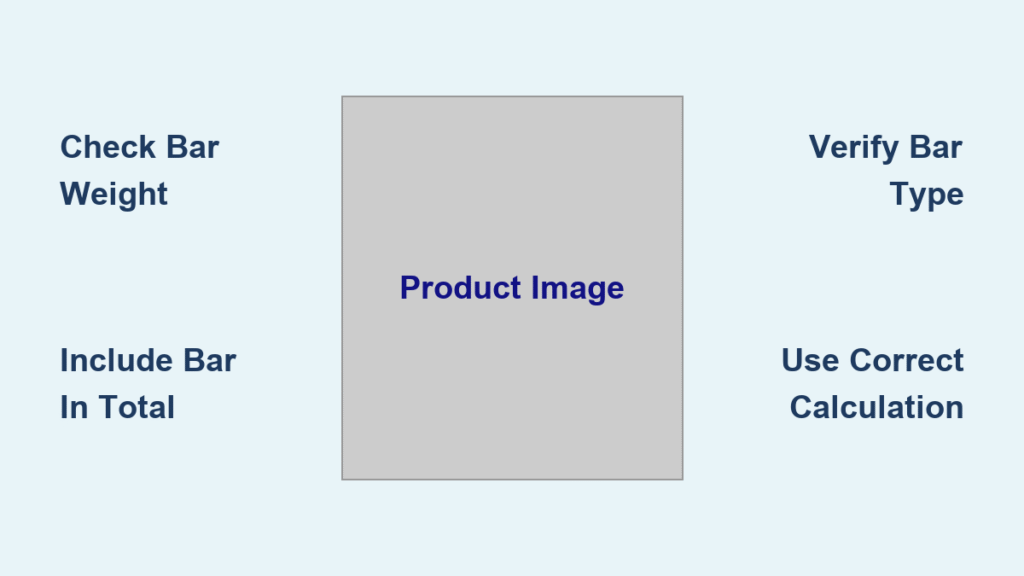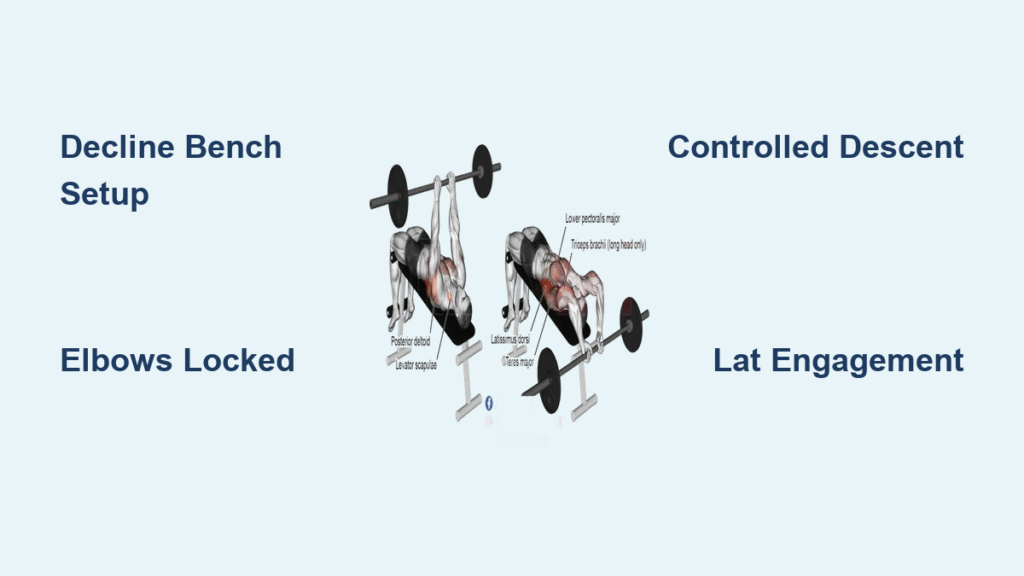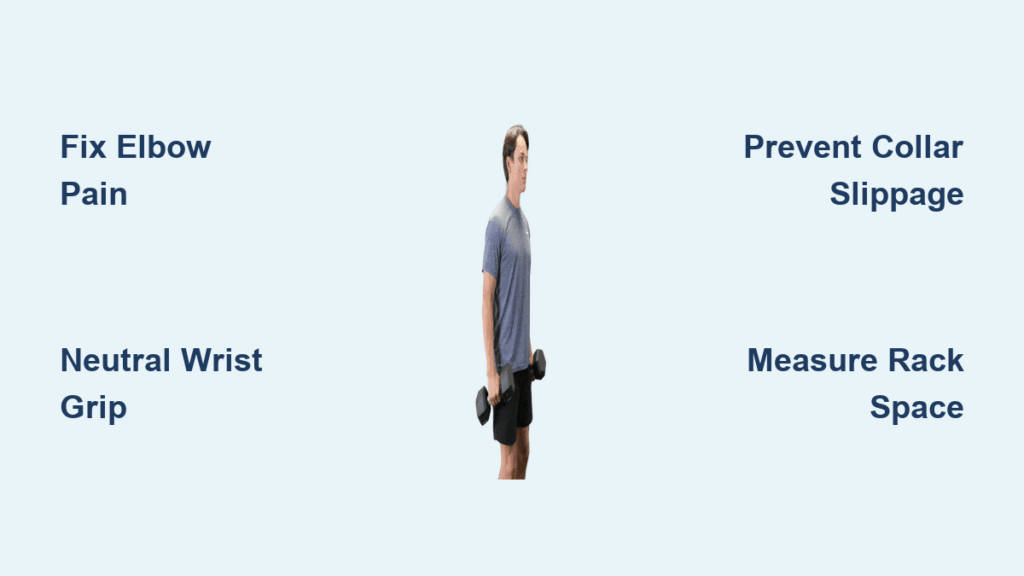You’ve just hit a new personal record—135 pounds on the bench press. But wait, did you account for the barbell bar weight? That seemingly simple oversight could mean you actually lifted only 90 pounds of plates, completely misrepresenting your strength gains. This isn’t gym trivia; it’s the difference between accurate progress tracking and dangerous plateaus. From Olympic platforms to home gyms, barbell bar weight varies from 5 pounds to over 100 pounds across different models. Skipping this critical detail sabotages progressive overload, distorts your one-rep max calculations, and risks injury when you unexpectedly handle heavier loads. In this guide, you’ll discover the exact weights for every bar type, learn why your squat bar weighs 55 pounds (not 45), and master the calculation rule that ensures every rep counts toward real progress.
Men’s vs Women’s Olympic Bar Weight: Why 45lbs vs 33lbs Matters
Commercial gyms worldwide standardize men’s Olympic barbells at 45 pounds (20 kilograms), though the precise metric equivalent is 44.1 pounds. This universal benchmark forms the foundation for strength calculations in programs like 5×5 and Starting Strength. When you load two 45-pound plates (one per side), you’re lifting 135 total pounds—45 for the bar plus 90 for the plates. Ignoring the bar weight here falsely inflates your lift by 33%.
Women’s Olympic bars break from this standard at 33 pounds (15 kilograms), designed specifically for smaller hand sizes and competition requirements. Key differences include:
– 25mm shaft diameter (vs. 28mm on men’s bars) for better grip comfort
– 6.6-foot length (vs. 7.2 feet) accommodating shorter statures
– Rotating sleeves maintained for Olympic lift efficiency
Powerlifting competitions ignore gender distinctions, using identical 45-pound bars for all athletes. This creates unified strength standards but means female lifters must adjust calculations when transitioning between Olympic weightlifting and powerlifting contexts. Always verify your gym’s bar type before logging lifts—many facilities use women’s bars for general training despite the weight difference.
Powerlifting Bar Weights: Squat Bars (55lbs) vs Deadlift Bars (45lbs)

Your powerlifting bar’s weight directly impacts training strategy. Power bars maintain the standard 45-pound weight but feature aggressive knurling, center knurling for squats, and minimal whip through a thicker 29mm shaft. These design choices optimize stability during maximal lifts but make them feel heavier than Olympic bars due to reduced flexibility.
Critical weight variations emerge in specialized powerlifting equipment:
– Squat bars weigh 55 pounds with rigid construction that eliminates bar whip. This extra 10 pounds demands immediate strength adaptation—adding two 45s creates 235 total pounds (55 + 90), not 225.
– Deadlift bars stay at 45 pounds despite longer shafts and thinner diameters. Their increased whip reduces effective range of motion, but the weight remains identical to standard bars. Never assume deadlift bars are lighter—they’re engineered for flex, not weight reduction.
Pro Tip: When switching from an Olympic to squat bar, reduce plate weight by 10% initially. That “easy” 225-pound squat on a standard bar becomes 235 on a 55-pound squat bar—a significant jump your nervous system must adjust to.
Home Gym Bar Weights: Standard Spinlock Bars (13-15lbs) Explained

Home gym owners often underestimate how dramatically bar weight affects programming. Standard 1-inch spinlock bars—common in compact setups—weigh just 12.8 pounds for 5-foot models and 15 pounds for 6-foot versions. This creates a critical miscalculation risk: loading two 25s totals only 115 pounds (15 + 50), not the expected 125.
These bars differ fundamentally from Olympic standards:
– Threaded ends require spinlock collars instead of spring clips
– 1-inch diameter shafts prevent Olympic plate compatibility
– No rotating sleeves increase stress during dynamic lifts
Avoid this mistake: Using a standard bar for “135” bench press (one 45 per side) actually means lifting just 105 pounds total. For accurate progression, treat every home gym session as a custom calculation scenario—never assume standard weights apply.
Trap Bar to Safety Squat: Exact Weights for 10 Specialty Barbells
Specialty bars introduce the widest weight variations, directly impacting your training load. Trap bars (hex bars) range from 45 to 70 pounds depending on handle configuration and material thickness. A typical 55-pound trap bar means your “225” deadlift (two 45s) actually totals 315 pounds—90 pounds heavier than plate weight alone suggests.
Critical specialty bar weights you must know:
– Safety squat bars: 60-75 pounds (the extra 15-30 pounds shifts weight forward, demanding significant core adjustment)
– EZ curl bars: Standard 22 pounds (a 45-pound “curl” uses just 23 pounds of plates)
– Technique/training bars: 5-25 pounds for youth or form practice
– Axle/fat bars: 20-55 pounds depending on diameter thickness
Urgent warning: Using a 70-pound safety squat bar for “225” squats (two 45s) actually loads 310 pounds on your spine. Always subtract the bar weight from your target total to determine correct plate loading.
How to Calculate Total Weight: Why Your 135lb Bench Press Includes 45lbs for the Bar

The universal rule every lifter must engrave in their training log: always include the barbell bar weight in your total calculation. This isn’t optional—it’s biomechanical reality. Your muscles move the entire implement, and excluding the bar creates dangerous discrepancies:
– False strength baselines that stall progression
– Unexpected 20-30% weight jumps when switching bars
– Compromised program integrity (e.g., Wendler 5/3/1 fails without accurate totals)
Follow this calculation formula:
1. Identify your bar’s actual weight (use gym markings or this guide)
2. Add plate weight per side (e.g., 45 + 45 = 90)
3. Add the bar weight (90 + 45 = 135 total)
Common error: Assuming “135” means 135 pounds of plates. In reality, it’s 45 pounds of bar plus 90 pounds of plates. When advancing to 225, you’re adding four 45s (180 pounds) to the bar—not five, which would total 270.
Olympic vs Powerlifting Competition Bar Weight Rules
Competition standards eliminate guesswork but create training complexities. Olympic weightlifting strictly separates genders:
– Men use 20kg (44-pound) bars with rotating sleeves
– Women use 15kg (33-pound) bars with identical mechanics
Powerlifting federations like IPF and USAPL mandate 20kg bars for all genders. This means:
– Female powerlifters train with 45-pound bars (vs. 33-pound Olympic bars)
– No specialty bars allowed in competition—only certified power bars
– Bar weight becomes a fixed variable for fair comparison across divisions
Key consequence: A female lifter transitioning from Olympic weightlifting to powerlifting must suddenly account for 12 extra pounds on every lift. That “200” clean and jerk becomes a “212” in powerlifting context—a 6% strength increase overnight through calculation alone.
Spot Your Gym’s Bar Types: Color Codes and Physical Clues
Gyms deploy visual systems to prevent bar weight confusion. Color-coded tape on collars provides instant identification:
– Yellow tape: 55-pound squat bars
– Red tape: Deadlift bars (still 45 pounds)
– Blue tape: Standard power bars
– Gray tape: Damaged bars (use only for rack pulls)
When tape is missing, perform these physical checks:
1. Measure shaft diameter: 25mm = women’s Olympic (33lb), 28mm = men’s Olympic (45lb)
2. Check length: 6.6 feet = women’s bar, 7.2 feet = men’s bar
3. Inspect knurling: Aggressive center knurling = power/squat bar (45-55lb)
Critical red flag: Bent bars often gain weight from structural deformation. Roll any suspect bar on a flat surface—if it wobbles, avoid it entirely. Even a slight curve adds uneven resistance that sabotages form.
Why Two Olympic Bars Might Weigh Differently: Manufacturing Factors
Not all 45-pound bars weigh exactly 45 pounds. Steel density variations create ±2 pound differences between brands, while hollow shaft construction (common in budget bars) reduces weight by 1-3 pounds versus solid counterparts. Sleeve length also impacts totals—competition bars with shorter sleeves weigh less than training bars with extended loading zones.
Three factors causing real-world discrepancies:
– Alloy composition: Higher-grade steel increases density (and cost)
– Knurling depth: Aggressive knurling removes metal, slightly reducing weight
– Collar design: Fixed vs. rotating sleeves alter mass distribution
Pro verification method: Weigh your bar on calibrated gym scales during off-hours. Many “45-pound” bars actually register 43-47 pounds—a 4-9 pound miscalculation that compounds with heavy loading.
Choosing Your Home Gym Bar: Space, Weight, and Training Needs
Selecting the right barbell bar weight prevents wasted investment. For compact spaces under 6 feet:
– Choose 5-foot standard bars (12.8 pounds)
– Avoid Olympic bars requiring 7+ feet of clearance
– Prioritize technique bars (15-25 pounds) for form practice
For serious strength training:
– Invest in a true 45-pound Olympic bar with rotating sleeves
– Verify shaft diameter (28mm) and length (7.2 feet)
– Budget for 2.5-pound microplates to maintain accurate progression
Never compromise on:
– Bar whip: Power bars (minimal flex) suit strength training; Olympic bars (moderate whip) serve dynamic lifts
– Knurling quality: Aggressive knurling prevents slipping during heavy pulls
– Weight tolerance: Commercial-grade bars maintain consistent weight despite heavy use
Understanding barbell bar weight transforms from technical detail to training cornerstone when you realize every pound directly impacts your strength trajectory. From the standard 45-pound Olympic bar to 75-pound safety squat variants, these implements aren’t neutral tools—they’re active resistance components that demand precise accounting. By mastering these weights and applying the universal calculation rule (always include the bar), you’ll eliminate progress-killing miscalculations and build strength on truly accurate data. Start verifying your gym’s bar weights today—your next personal record depends on it.




